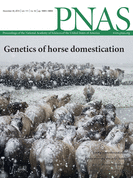Article Co-Authored by Landis Published in Proceedings of the National Academy of Sciences Vol. 111, No. 52, 2014
 A paper co-authored by UMaine Department of Civil & Environmental Engineering and UMaine Composites Center faculty member Dr. Eric Landis, P.E., was published in the 111th volume of the Proceedings of National Academy of Sciences.
A paper co-authored by UMaine Department of Civil & Environmental Engineering and UMaine Composites Center faculty member Dr. Eric Landis, P.E., was published in the 111th volume of the Proceedings of National Academy of Sciences.
The abstract of the paper, titled “Mechanical resilience and cementitious processes in Imperial Roman architectural mortar,” follows:
The pyroclastic aggregate concrete of Trajan’s Markets (110 CE), now Museo Fori Imperiali in Rome, has absorbed energy from seismic ground shaking and long-term foundation settlement for nearly two millenia while remaining largely intact at the structural scale. The scientific basis of this exceptional service record is explored through computed tomography of fracture surfaces and synchroton X-ray microdiffraction analyses of a reproduction of the standardized hydrated lime–volcanic ash mortar that binds decimeter-sized tuff and brick aggregate in the conglomeratic concrete. The mortar reproduction gains fracture toughness over 180 d through progressive coalescence of calcium–aluminum-silicate–hydrate (C-A-S-H) cementing binder with Ca/(Si+Al) ≈ 0.8–0.9 and crystallization of strätlingite and siliceous hydrogarnet (katoite) at ≥90 d, after pozzolanic consumption of hydrated lime was complete. Platey strätlingite crystals toughen interfacial zones along scoria perimeters and impede macroscale propagation of crack segments. In the 1,900-y-old mortar, C-A-S-H has low Ca/(Si+Al) ≈ 0.45–0.75. Dense clusters of 2- to 30-µm strätlingite plates further reinforce interfacial zones, the weakest link of modern cement-based concrete, and the cementitious matrix. These crystals formed during long-term autogeneous reaction of dissolved calcite from lime and the alkali-rich scoriae groundmass, clay mineral (halloysite), and zeolite (phillipsite and chabazite) surface textures from the Pozzolane Rosse pyroclastic flow, erupted from the nearby Alban Hills volcano. The clast-supported conglomeratic fabric of the concrete presents further resistance to fracture propagation at the structural scale.
View the paper: http://www.pnas.org/content/111/52/18484.short
M. D. Jackson, E. N. Landis, P. F. Brune, M. Vitti, H. Chen, Q. Li, M. Kunz, H.-R. Wenk, P. J. M. Monteiro, and A. R. Ingraffea, “Mechanical Resiliance and Cementitious Processes in Imperial Roman Architectural Mortar,” Proceedings of the National Academy of Sciences V. 111 No. 52, 2014, pp. 18484-18489.
